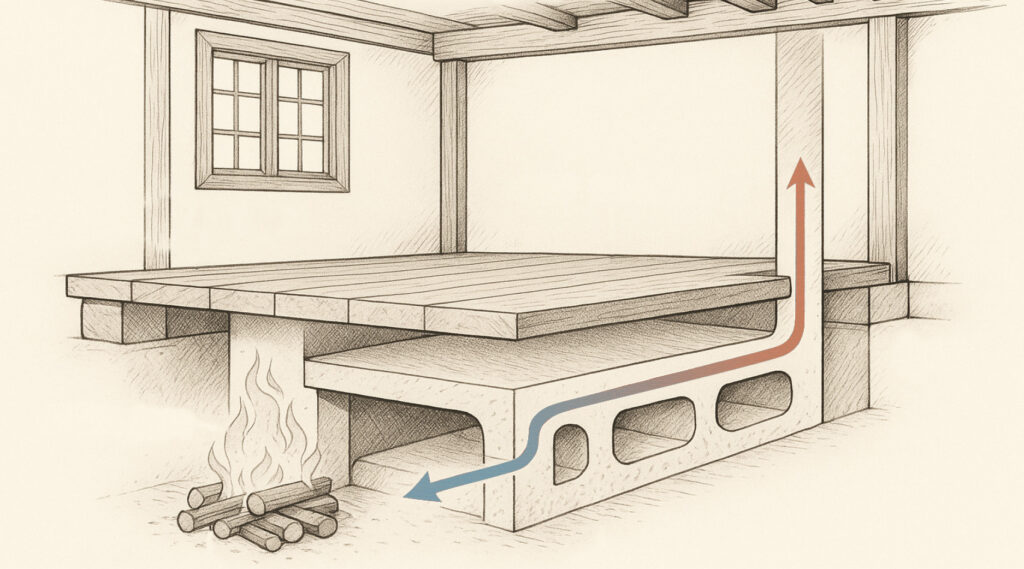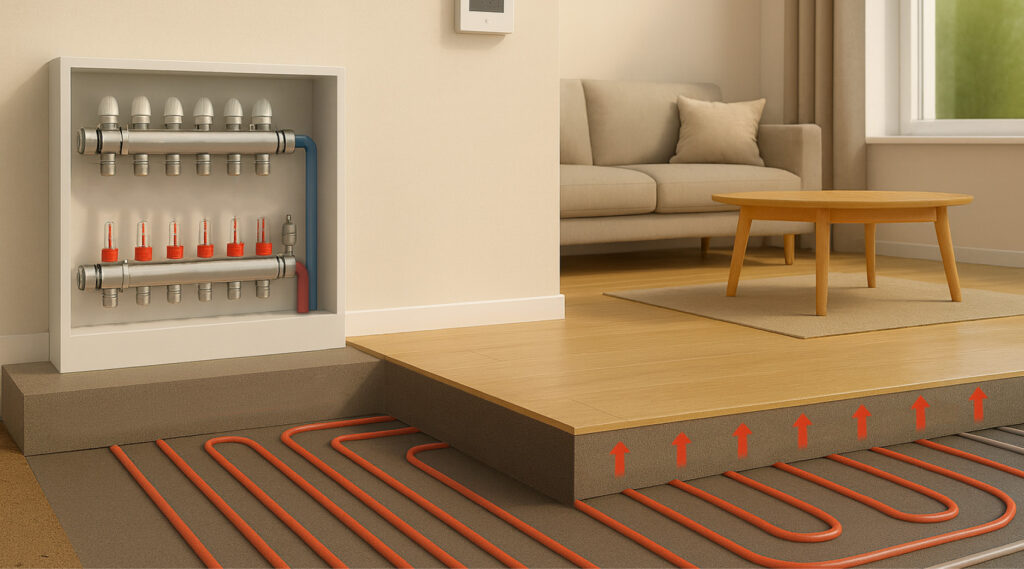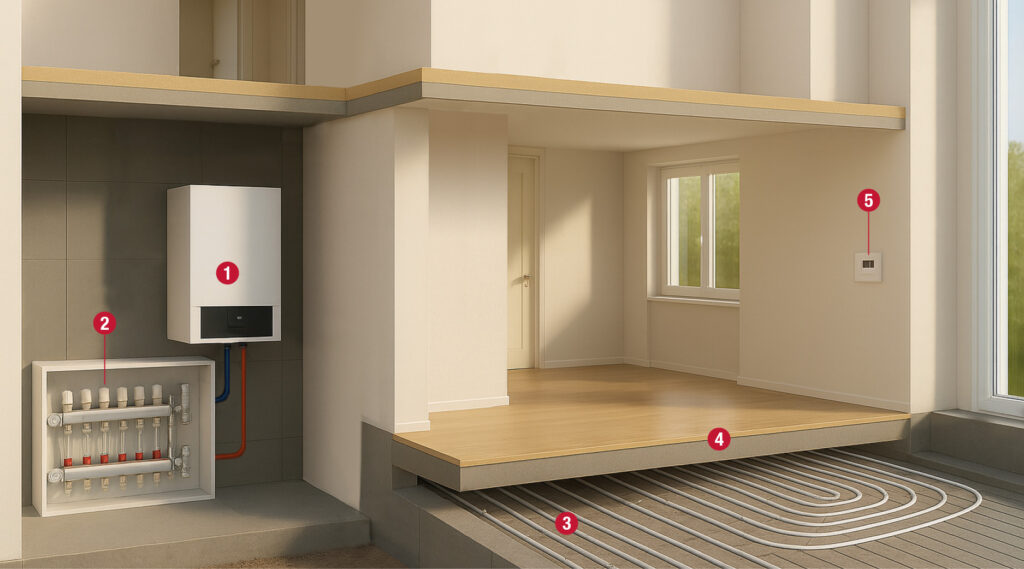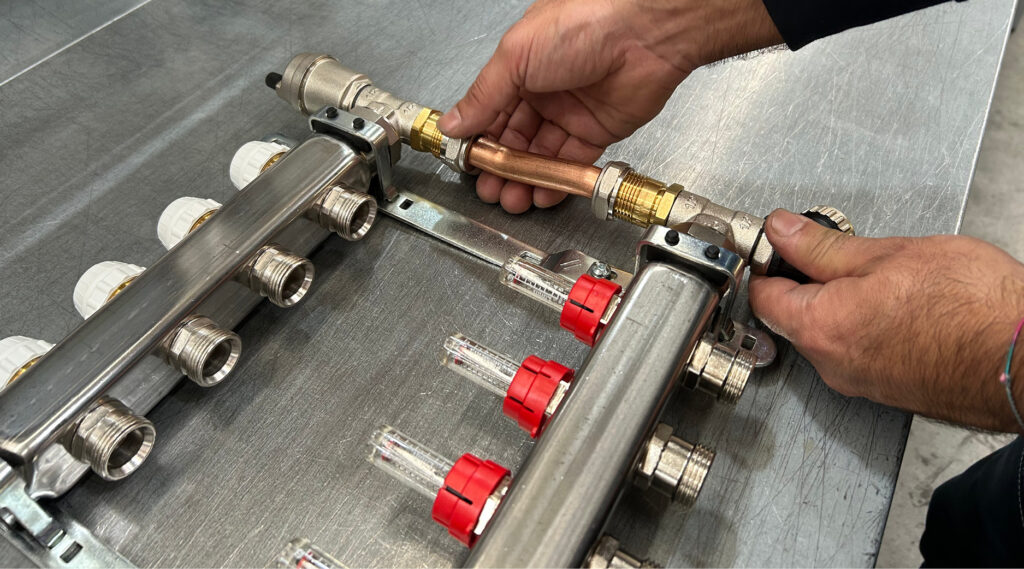22 10 月 2025
Underfloor heating is one of the most appreciated technologies in the HVAC industry today. It provides even heat distribution, low energy consumption, and great design flexibility. However, to achieve optimal performance, every system requires quality components and consistent hydraulic balancing.
Heating from below isn’t a modern invention. The ancient Romans used the hypocaust system to distribute warmth beneath their floors. Similarly, traditional Korean (ondol) and Chinese (kang) systems relied on circulating heat to create comfortable indoor environments. Today’s technology builds on these same principles, only with more precision and performance.

Example of Korean Ondol.
A radiant floor system heats rooms evenly from the ground up using PEX or multilayer pipes embedded in a screed layer.
Here’s how it works:
Room-by-room temperature control is handled by thermostats and electrothermal actuators.

Underfloor heating is synonymous with comfort and efficiency, especially in low-energy buildings. Its main benefits include:
These features make underfloor heating a growing standard in high-efficiency buildings. The technology keeps evolving: from hydronic systems to hybrid solutions that also provide cooling during the summer.
To operate efficiently, an underfloor heating system typically includes:
1- Heat generator: condensing boiler, heat pump, or other systems producing water at 30–40°C.
2- Manifolds: direct hot water into circuits and collect return water.
3- Pipe circuits: arranged in loops or spirals beneath the floor, allowing hot water to circulate.
4- Insulation and screed: the insulation prevents heat loss, and the screed spreads heat evenly.
5- Room thermostats: control the temperature independently in each space.

Among all system components, the manifold is the heart of the distribution system. It channels hot water to each circuit and balances flow based on room demand.
You’ll find different manifold types on the market, primarily differentiated by material:
At Itap, we recommend our stainless steel manifolds, designed and manufactured in-house to ensure:
By choosing Itap stainless steel manifolds, you benefit from:
Check out the complete technical information on our stainless steel manifolds.
Modern systems are controlled by thermostats and electrothermal actuators. As circuits close off one by one (typical of variable flow systems), differential pressure increases. The consequences? Noise, wear and tear on internal components, and flow imbalances.
To prevent these issues, we recommend the Itap differential by-pass kit, a simple yet effective solution:
This compact solution reduces malfunctions, simplifies maintenance, and ensures system continuity.
Explore the technical information of this product to learn more.

For larger, more complex systems with many circuits and variable flow, dynamic balancing is the smartest solution. Unlike manual setups, Itap manifolds with dynamic balancing automatically adjust to maintain steady flow in every circuit, no matter the conditions.
What this means:
See the full technical information about our manifolds with dynamic balance on website.
Underfloor heating isn’t just about distributing heat, it’s an investment in comfort, efficiency, and durability. With Itap stainless steel manifolds, dynamic balancing and our differential by-pass kit, you can deliver high-performance systems that last.
Interested in these products?
Reach out to our experts directly by filling out the contact form.
Stay in the loop! Follow us on our social media pages for more updates!
How does underfloor heating work?
It heats the space evenly from the floor up using PEX or multilayer pipes embedded in screed. Hot water flows through these pipes via a manifold system, warms the floor, and cycles back to the heat source.
How long should it stay on?
Continuous, modulated operation is ideal. Avoid frequent on/off cycles. This keeps the temperature stable and leverages the screed’s thermal inertia to reduce consumption and imbalances.
How long does it take to warm up?
The time needed to heat a room depends on several factors:
In general, it takes a few hours to feel the temperature rise and stabilize.
Can underfloor heating work with parquet floors?
Yes, you can. You just have to choose the right type of wood and adhesives, and follow the surface temperature limits set by the manufacturer.